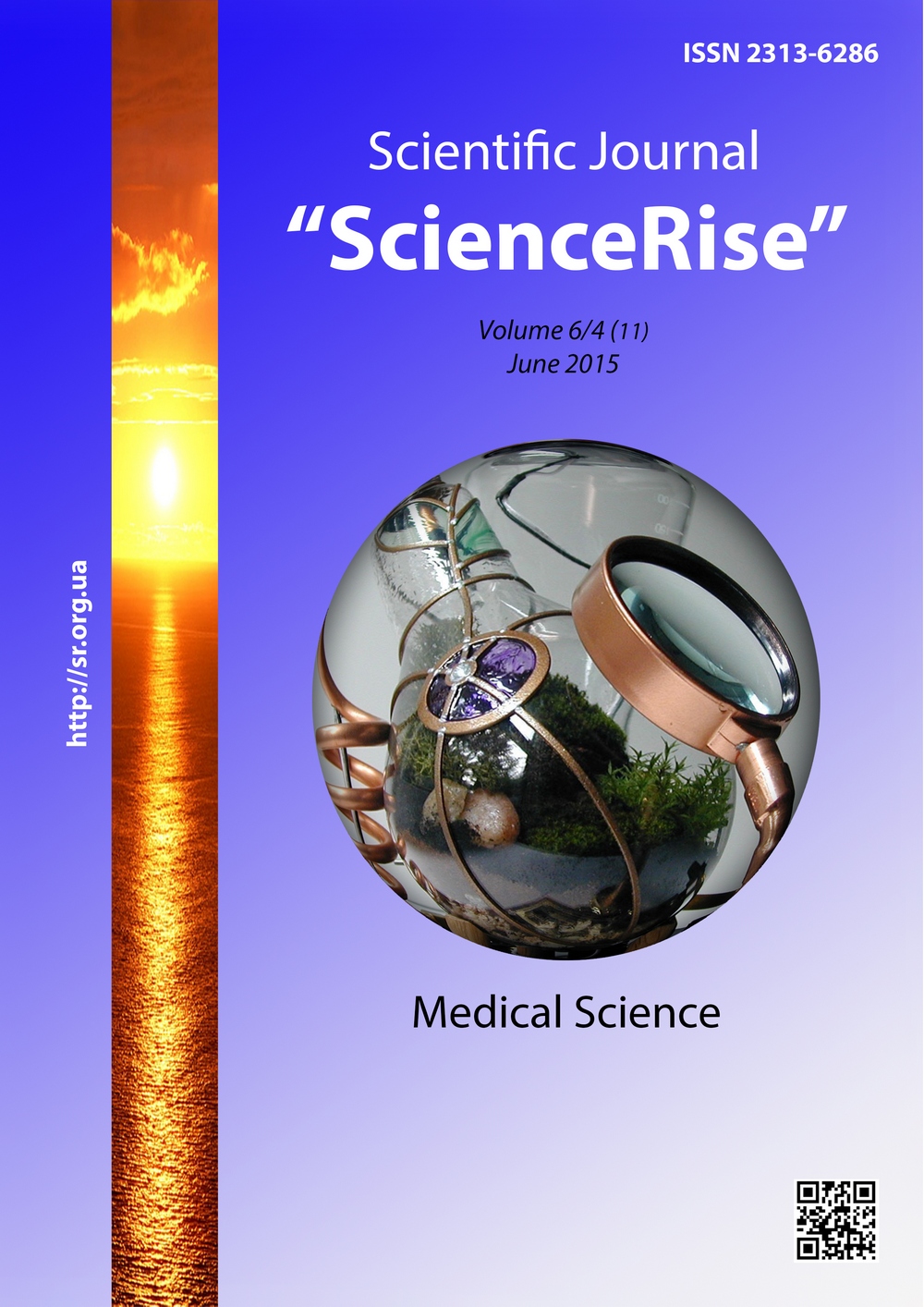Использование липосомальных растворов антибиотиков в комплексном лечении инфицированных и гнойных ран у детей
DOI:
https://doi.org/10.15587/2313-8416.2015.45468Ключові слова:
инфицированные и гнойные раны, дети, лечение, липосомальный раствор цефтриаксонаАнотація
В работе представлены результаты использования липосомальных растворов цефтриаксона в комплексном лечении инфицированных и гнойных ран у детей.
Показано, что применение данных препаратов в местном лечении инфицированных и гнойных ран у детей приводит к усилению биосинтетической активности клеток, репаративных процессов в области раны, ускоряет образование грануляционной тканиПосилання
Vіltsanyuk, O. A. (2009). Complex lіkuvannya gnіyno-ignition process m'yakih tkanin sprichinenogo klostrіdіyami that neklostrіdіalnіmi normal body mіkroorganіzmami. Klіnіchna hіrurgіya, 11, 42–43.
Lіgonenko, O. V., Dіgtyar, І. І. (2010). Vikoristannya kombіnovanoї estrogenolіposomalnoy terapії in integrated lіkuvannі seed-gnіynih urazhen m'yakih tkanin have ailments that Pokhil senile vіku. Ukrai'ns'kyj Zhurnal Hirurgii', 1, 81.
Logatchev, V. K. (2010). Theory and practice of local treatment of purulent wounds. Klіnіchna hіrurgіya, 11, 51.
Bagrіy, O. S., Godlevsky, A. І., Bєlkanіya, G. S. (2002). Dinamіka mіkrotsirkulyatornogo vіdobrazhennya zagoєnnya pіslyao-peratsіynih. News Vіnnitskogo sovereign medichnogo unіversitetu, 2, 416–422.
Zhelіba, M. D., Prevar, A. P., Funіkov, A. V. (2005). Optimіzatsіya complex lіkuvannya GOSTR gnіyno-ignition zahvoryuvan m "yakih tkanin. Mat. NAUKOVO-praktichnoї konferentsії mіzhnarodnoyu s participation "Rani m" yakih tkanin that Ranova іnfektsіya”. Kyiv, 28.
Oborotova, N. A., Tolcheva, E. V. (2010). Liposomes as a vehicle for bioactive molecules ostanoski. Russian biotherapeutic zhurnal, 1, 54–61.
Pashkov, E. P., Shvets, V. I., Sorokoumova, G. M., Ivanova, M. A., Aleksandrov, M. T., Kiyamov, A. K., Kurilko, N. L. (2009). Action liposomes and liposomal form of ceftriaxone in the healing of skin wounds in rats. Antibiotics and chemotherapy, 5-6, 25–30.
Dudnichenko, A. S., Krasnopolskiy, Y. M., Shvets, V. I. (2001). Liposomal drugs in experiment and clinic. Kharkov: RA-Caravelle, 143.
Kreines, V. M., Melnikov, V. M., Margolin, Y. M., Melyantseva, L. P. (1990). Anti-inflammatory effect of liposomes. Bulletin of Medical Sciences of the USSR, 6, 44–47.
##submission.downloads##
Опубліковано
Номер
Розділ
Ліцензія
Авторське право (c) 2015 Олег Владимирович Спахи

Ця робота ліцензується відповідно до Creative Commons Attribution 4.0 International License.
Наше видання використовує положення про авторські права Creative Commons CC BY для журналів відкритого доступу.
Автори, які публікуються у цьому журналі, погоджуються з наступними умовами:
1. Автори залишають за собою право на авторство своєї роботи та передають журналу право першої публікації цієї роботи на умовах ліцензії Creative Commons CC BY, котра дозволяє іншим особам вільно розповсюджувати опубліковану роботу з обов'язковим посиланням на авторів оригінальної роботи та першу публікацію роботи у цьому журналі.
2. Автори мають право укладати самостійні додаткові угоди щодо неексклюзивного розповсюдження роботи у тому вигляді, в якому вона була опублікована цим журналом (наприклад, розміщувати роботу в електронному сховищі установи або публікувати у складі монографії), за умови збереження посилання на першу публікацію роботи у цьому журналі.

